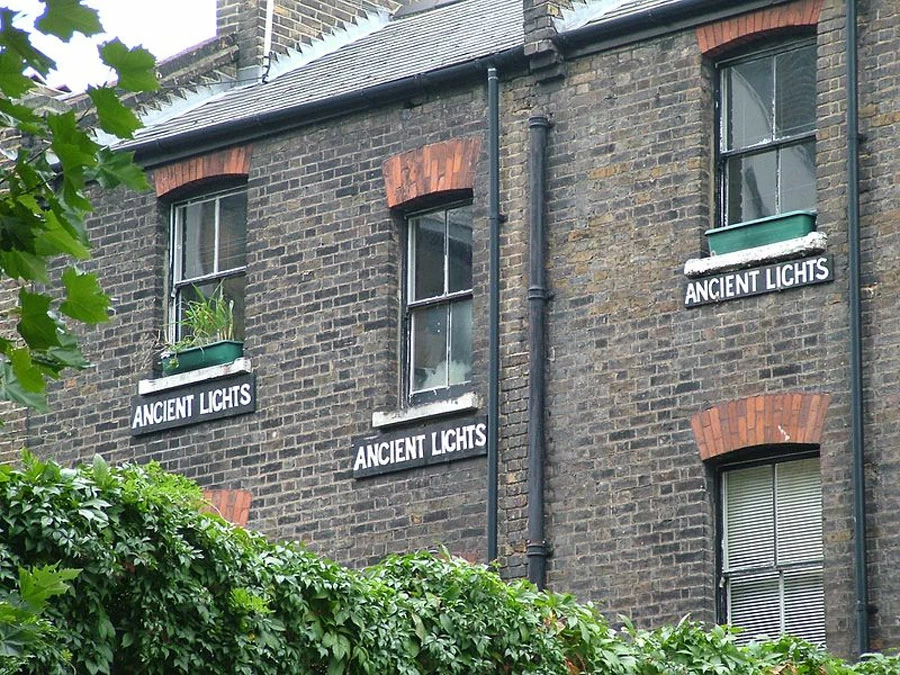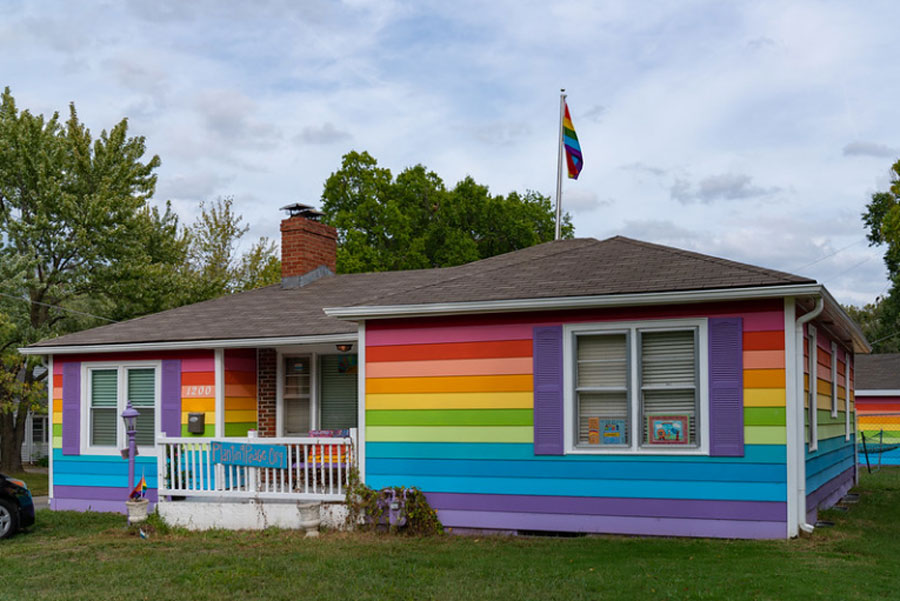In England, the “right to light” has been a legal matter since the 17th century and there is still physical evidence of this today. Taking a stroll around London, a visitor may be surprised to stumble across old signs beneath windows with the words “Ancient Lights” written on them.
Buildings ranging from churches, theatres and stores to regular tenement homes can all be found with these strange signs on them. But what do they mean? And are they still important?
“Ancient Lights”
Ancient Lights is a doctrine of law that dates back to 1663. “The right to light” is an English property law that gives homeowners the right to receive natural light from and through a window, if that particular window has been receiving light uninterrupted for at least 20 years.
Once this right is gained, the owners of adjacent and neighboring lands and properties cannot obscure the windows through building works such as home building or wall raising. This even applies to planting trees that may block the light and air entering the property.

The owner has the right to sue their neighbors on the grounds that they are causing a “nuisance” by obstructing the light. Whilst this may seem extreme there have been legal cases that have been brought and won in courts of law.
Despite being dated to the 17th century, the law still exists in the modern world though it is slightly different from the original. The law commission in England undertook a review of the law in 2014 which recommended amending the law so that there were notice periods for the offending neighbors.
- The Mystery Of The Concealed Shoes: Why Were They Hidden In Walls?
- Origin of London Bridge is Falling Down
Owners of light rights also received notice periods, and damages were to be paid rather than leading to the “nuisance” being simply demolished. The commission, however, did not recommend that the right should be abolished and as such, it is still in use today.
Origins Of The Law And “Spite Houses”
Whilst the law has been dated to 1663, the reason for its introduction is still obscure. Many have placed emphasis on the popularity of “spite houses” in the 17th and 18th centuries.
In this period, there were no building codes or restrictions, and people could construct and erect whatever structures they wished. The pettier people with money to spare began to develop houses and structures to annoy their neighbors or improve their own property at the expense of those around them.

This practice was not limited to England. One of the oldest spite houses still existing today is found in Marblehead, Massachusetts. Built by Thomas Wood in 1716, the home became known as the Old Spite House.
Whilst there are numerous origin stories for this house, the one that prevails is that upon the death of his father, Thomas discovered that his brother was given the majority of the estate. To spite his brother, Thomas constructed a 10-foot-wide house on his neighboring land, so that his brother would not be able to enjoy the view of his estate.
In 1830, John Hollensbury took another approach to spiting people by constructing his spite house. Hollensbury’s home was located next to an extremely busy alley in Alexandria, Virginia that was utilized by pedestrians and horse drawn carriages all throughout the day and night.
Hollensbury became so infuriated by the noise and disruption that he built a home blocking off the thoroughfare. It was and still is classed as America’s narrowest home. Standing 7 foot wide and 25 feet deep, the home filled the gap between his house and his neighbors. The house today is a popular tourist destination.

Spite Houses were not limited to the 19th century either. One was built as late as 2012. Planting Peace, a non-profit humanitarian organization, bought land and built a property in Topeka Kansas across the street from the Westboro Baptist Church, a hate group.
The Church was known for setting up vocal and abusive protests against LGBTQ+, Muslim and Jewish communities. Planting Peace responded by raising money to build a single-story house opposite the church that they proceeded to paint in rainbow colors in honor of the Pride flag. It is now called Equality House.
How The Law Evolved
The debate around natural light and how much a person is entitled to has been discussed for some time. The first evocation of the Ancient Lights right claimed that the light had to remain the same as it had for the previous 20 years.
In 1904, a legal case proved difficult to judge because of this less than clear explanation. Colls v. Home & Colonial Stores Ltd, a case brought in Shoreditch in London by a man named Colls, ruled in his favor because he was entitled to “sufficient light according to the ordinary notions of mankind.” Experts argued that because of this Colls was in the right, and the court agreed.
Percy Waldram, an expert in law and Ancient Lights, in the 1920s proposed that there should be a standard unit of measurement of light that people could claim. He claimed that people required one foot candle of light for reading and other work.
This would be a sufficient amount of light required in the home. A foot-candle was a unit of measurement for the intensity of light, defined as enough light to illuminate 1 square-foot (0.09 square meters) of area. Incredibly, this is still part of the law today.
The Ancient Right To Light
Despite this quirky law seeming outlandish today, it is still used throughout England and most of the United Kingdom. Few properties still utilize the signage that the buildings in London do, but the fact remains that should someone attempt to build a property or erect an edifice that will obstruct another’s home, this right can be evoked to prevent them or to gain financially.
What is least surprising is that, although spite houses exist in many countries, this law has not been exported out of England and remains firmly a British eccentricity that may remain for many years to come.
Top Image: “Ancient Lights” signs under windows in Clerkenwell, City of London, United Kingdom (Mike Newman / CC BY-SA 2.5)
By Kurt Readman